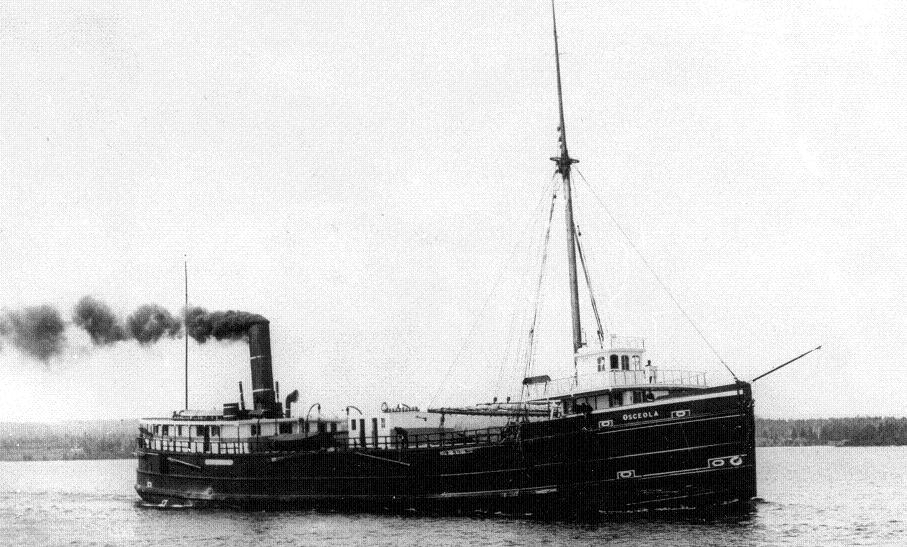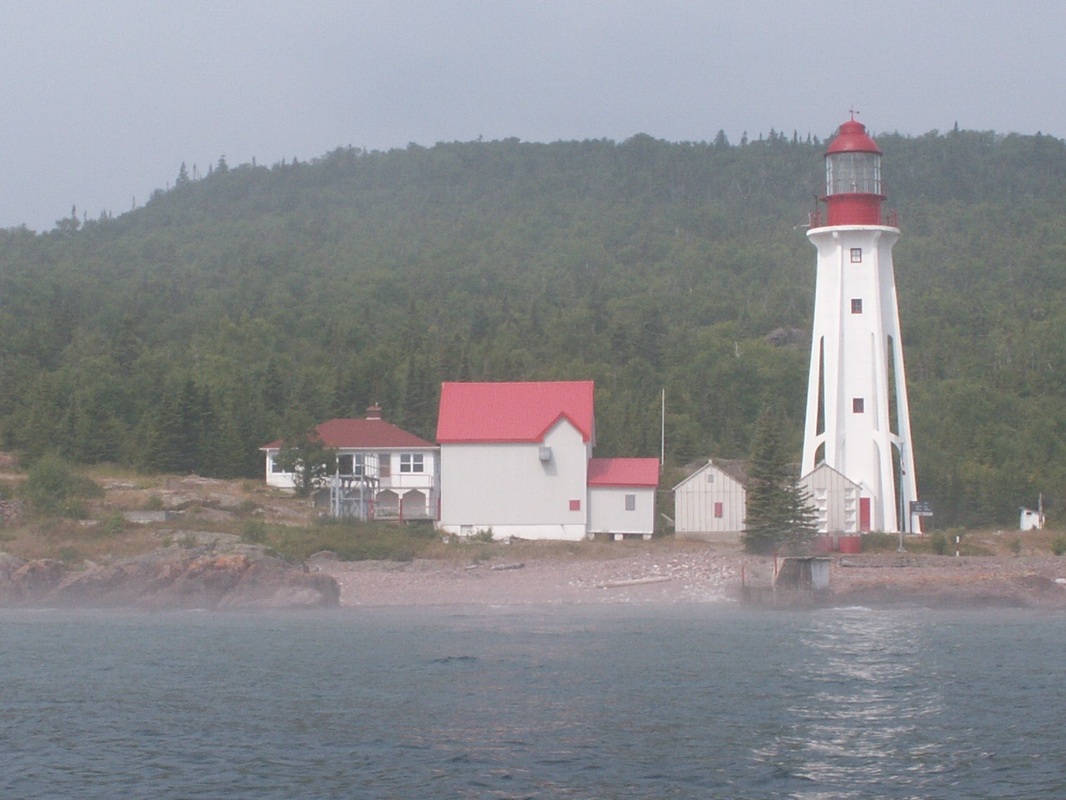listening to the shuddering soffit, the wind whistle down the chimney, hoping the neighbors tree doesn’t decide to drop itself on our garage, it is hard to imagine the plight of shipwrecked souls caught out on Superior in days past. The violence, bone-chilling temperatures and the unforgiving topography of the east shore of the largest Great Lake is legendary.
The earliest known shipwreck north of Montreal River Harbour was a passenger-freight steamer called the ACADIA. During heavy seas, the boat ran aground near Grindstone Point south of Old Woman Bay on November 6, 1896. Built in Hamilton in 1867, the ACADIA was the first vessel built in North America to have a composite hull (oak planking over iron frames). Loaded with 21,000 bushels of wheat, a hole in the hull sank the ship in 20 minutes in 12 feet of water. Before it could be salvaged, the ACADIA was pummelled to pieces by the constant wave action on this exposed rocky point. The crew survived but had to make the long and arduous trek to Gargantua Harbour more than 15 kilometres away. On a calm day kayakers and canoeists alike can still catch glimpses of twisted pieces of the ACADIA’s steel hull trapped among the giant boulders at Grindstone Point. The ships bell is now on display at the Agawa Bay Visitor Centre.
The imposing cliffs and impenetrable shoreline of Old Woman Bay claimed the wreck of the GOSPIE on December 4, 1906. This 200 foot wooden steamer belonging to the MacKay Company of Sault Ste. Marie was downbound from Fort William with a load of supplies for the CPR when it became unresponsive during a fierce snow storm. The ship and its crew of 18 drifted approximately 60 miles/100 kms north from 25 miles off Whitefish Point to where it beached itself near the south of the Old Woman River. Captain Boult managed to get everyone safely to shore only to find that they had very few provisions. He sent 12 of the crew in a yawl boat to Michipicoten River where they could get supplies and send word to the ship’s owners. Ill prepared for the fierce head wind and bone-chilling temperatures, the wet and weary crew abandoned the small boat and decided to walk along the coast to
Michipicoten instead. Needless to say the journey was no easy task. The Canadians in the crew fared better than the newly landed immigrants who were quickly overcome with the cold and suffered from their lack of experience in the bush.
Imagine the surprise of Joe Legarde and his guests when 3 of the crew stumbled through the doors of the North Star Boarding House in Michipicoten River Village in the middle of the night. The next morning, William Kimball, John Andre, Alex and Joseph Michaud manoeuvred a rescue boat out through the treacherous Michipicoten River mouth and scoured the shoreline for the remainder of the crew. Four miles from the village the rescuers came across the half frozen men, one walking in his stocking feet. The villagers spent the next day trying to warm the frozen hands and feet of the motley group. Joe Legarde’s dog team took the worst of the crew to the Algoma Central Railway in Michipicoten Harbour where they were transported to the care of Dr. Grimshaw at the Helen Mine.
On December 20, 1906, five of the GOLSPIE sailors arrived by tug in Sault Ste. Marie and underwent amputations for severely frost-bitten limbs. One of the men
lost both his hands and his feet. One poor soul succumbed to the ordeal after he contracted pneumonia. A letter to the Editor of the Sault Star on December 11, 1906 reported that an investigation by Magistrate George Reid found that the crew members were to blame for their own fate. The plight of the GOLSPIE was the
subject of much parliamentary debate. The parliament of the day used this tragedy as an argument for developing workmen’s compensation which was gaining greater support during the administration of Prime Minister Wilfred Laurier.
Little remains of the GOLSPIE. Some remember a ship’s boiler near the mouth of the Old Woman River. Early scuba divers remember a sunken wooden deck in the southwest corner of the picturesque cove. Rainbow fishermen sometimes snag wooden ribs reaching out of the sandy bottom of the bay while trying to catch the big one. Although little can be found of Superior’s sunken vessels, the stories and tales will continue to instil a sense of wonder and awe about the Lake, especially when the gales of November are upon us.


 RSS Feed
RSS Feed
